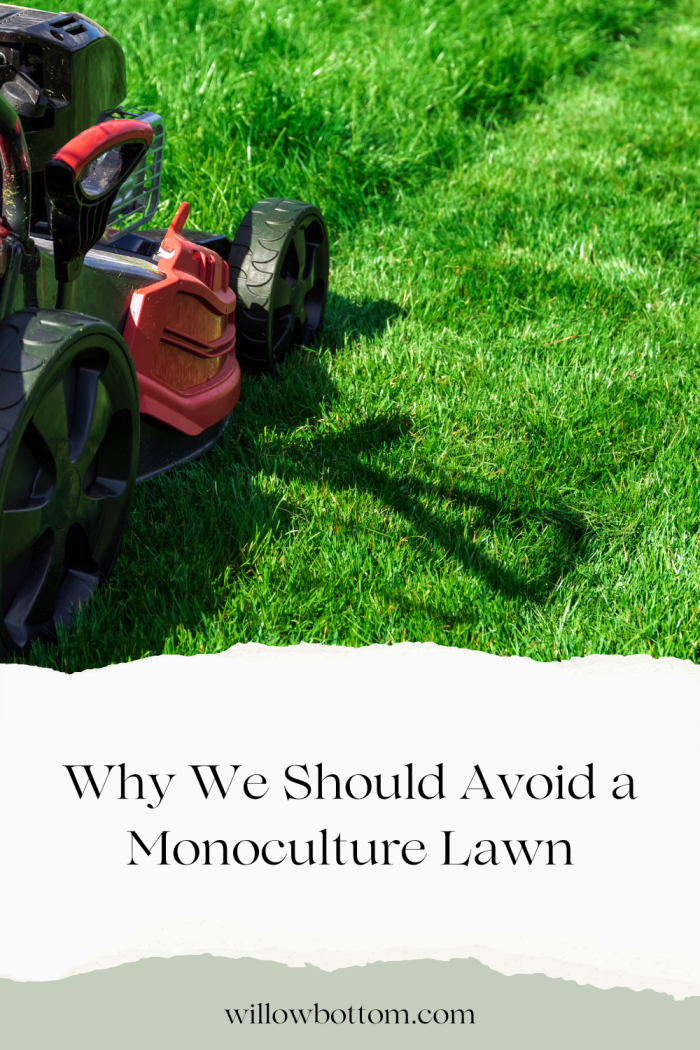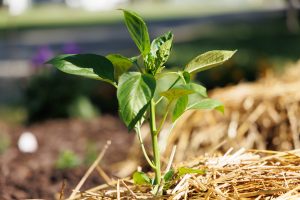Monoculture lawns are characterized by a single species of grass, often Kentucky bluegrass or Bermuda grass.
They are often favored for their neat and orderly aesthetic, particularly in urban and suburban settings, where they are commonly found in residential yards, parks, golf courses, and other recreational areas
Today, the monoculture lawn remains a common landscaping choice, but there is also a growing awareness of the need for more sustainable and ecologically friendly landscaping practices. Many homeowners are exploring alternatives to traditional monoculture lawns that require less maintenance and have fewer negative environmental impacts.
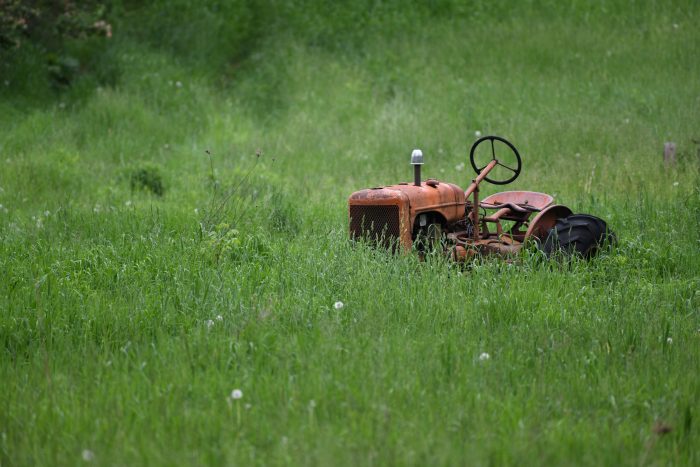
The history of the monoculture lawn
The history of the monoculture lawn dates back to the 17th century in Europe, particularly in France and England. It was during this period that the concept of a closely manicured, grassy expanse around grand estates and chateaus began to take shape.
However, these early landscapes were not true monoculture lawns as we know them today. Instead, they featured a mix of grasses, herbs, and other low-growing plants, often resembling wildflower meadows more than the uniform, single-species lawns we see today.
The 18th century saw the emergence of landscape design principles that emphasized the creation of open, green spaces around grand estates and homes. English landscape architects like Capability Brown were influential in popularizing this trend. However, these landscapes often included a blend of grasses, not monocultures.
The transformation into the modern monoculture lawn began in the 19th century, notably in the United States, with landscape architects like Andrew Jackson Downing advocating for the creation of “pleasure grounds” around homes.
Also Read: The Benefits Of Planting Native Plants On Your Property
This era also saw the widespread adoption of the lawn mower, which made it easier to maintain grass at a consistent, short height. Over time, the desire for uniformity, ease of maintenance, and the suburbanization of America popularized the classic monoculture lawn, often featuring Kentucky bluegrass or Bermuda grass, as a symbol of suburban affluence and well-kept properties.
In the 20th century, suburbanization in the United States led to the proliferation of single-family homes with front and backyards. The lawn became a symbol of suburban prosperity and a status symbol, further popularizing the monoculture lawn.
After World War II, the use of chemical fertilizers, herbicides, and pesticides became widespread. Advertising campaigns promoted the idea of the “perfect lawn” and encouraged homeowners to use these products to achieve it.
The pursuit of the perfect lawn has driven homeowners to meticulously tend to their outdoor spaces, employing regular mowing, fertilization, irrigation, and sometimes chemical treatments to achieve the idealized vision of a weed-free, emerald-green carpet.
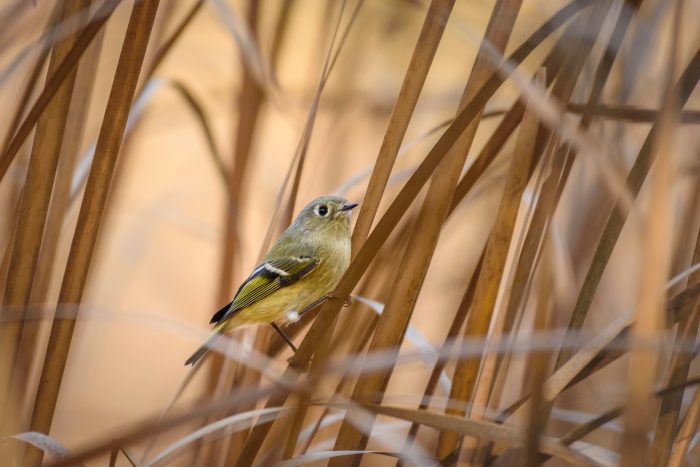
Environmental impacts of monoculture lawns
Monoculture lawns have several negative environmental impacts. Perhaps most notably, they demand excessive resources, including water, to maintain their lush appearance.
In regions with limited water resources, this high irrigation requirement contributes to water scarcity and strains on local ecosystems. Additionally, the routine use of chemical fertilizers, herbicides, and pesticides on monoculture lawns poses a risk to water quality, as these chemicals can leach into groundwater or run off into nearby water bodies, causing pollution.
Monoculture lawns consist of a single species of grass and are often devoid of other plant species.
The lack of plant diversity in monoculture lawns results in a limited capacity to support local wildlife, including pollinators and other beneficial insects, and contributes to habitat loss.
The heavy use of chemical pesticides and herbicides on these lawns harms not only unwanted pests but also beneficial insects like bees, butterflies, and beetles.
Monoculture lawns offer little shelter or nesting sites for birds and small mammals, which rely on a variety of plants for food and refuge.
The maintenance practices associated with monoculture lawns, such as frequent mowing and the use of noisy, gas-powered equipment, can disturb and even harm wildlife, driving away species that might otherwise thrive in more diverse and natural landscapes undermining biodiversity and the ecological balance of our ecosystems.
Constantly mowing and fertilizing a monoculture lawn can also lead to soil compaction, nutrient imbalances, and reduced microbial diversity.
Moreover, monoculture lawns sequester little carbon, whereas diverse landscapes with a mixture of plants can absorb and store more carbon, helping mitigate climate change. In sum, the environmental impacts of monoculture lawns encompass water waste, chemical pollution, reduced biodiversity, and a limited ability to combat climate change.
Monoculture lawns can have negative impacts on humans as well. One significant concern is the excessive use of chemical pesticides and herbicides on these lawns, which can pose health risks to individuals, especially children and pets who may come into close contact with treated areas. These chemicals can contribute to air and water pollution and have been associated with various health issues.
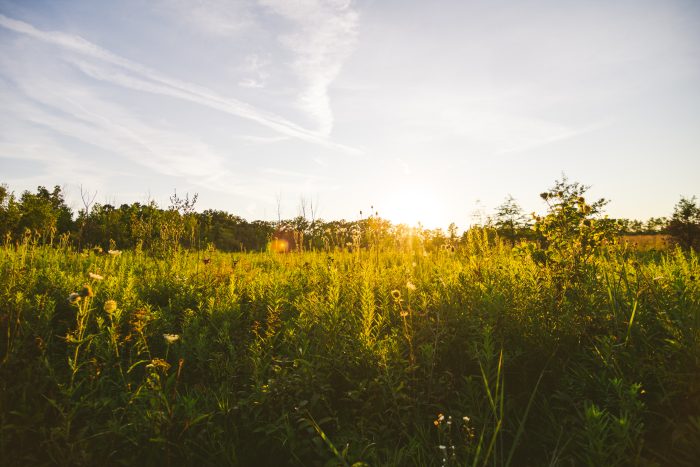
breaking free of the monoculture lawn
A diverse lawn represents a departure from traditional monoculture lawns, offering a rich tapestry of plant species that include not only grasses but also wildflowers, shrubs, and trees.
Such a landscape fosters a thriving ecosystem with numerous ecological and aesthetic advantages. Diverse lawns support a wide array of wildlife, including pollinators, birds, and insects, by providing essential food sources and habitats.
They also require fewer chemical inputs like pesticides and herbicides, making them safer for humans, pets, and the environment. Moreover, diverse lawns often require less water and maintenance, which can lead to cost savings and reduced environmental impacts.
Beyond their ecological benefits, these landscapes offer a dynamic and visually appealing environment, with varying colors, textures, and heights that create a unique and engaging outdoor space for relaxation and recreation. Ultimately, a diverse lawn demonstrates a commitment to sustainable and environmentally responsible landscaping, benefiting both the natural world and human well-being.
